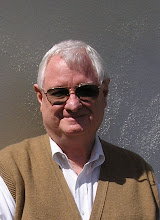
Arthur Simmons Horse Barn

The population of Mexico, Missouri changed little from the 1940s to 1970. It stayed just about eleven and a half thousand people. The town did have several distinct features including the breeding of "walking horses", a military academy for boys, the Audrain County Courthouse, the A.P. Green Firebrick Company, a shoe manufacturing plant, modest farms and lots of Fecht and Sullivan family cousins. Our family was related to half of the kids who attended Saint Brendan School.
My family (William T. and Mildred Fecht) lived during the Second World War on West Boulevard Street, near Eugene Field Elementary School and the King's Daughters Home for elderly women. (Our dear Aunt Cashie Ryan Fecht volunteered at the home for years and spent her own final days there.)
Beyond our home was the County Fair Grounds and beyond that was a Civilian Construction Camp (the CCCs of Franklin Roosevelt's era.) (When the war came along, the CCC boys disappeared into the military.) Walking from our home to Saint Brendan School was about a mile. On Boulevard Street there was the Simmons horse auction and training facility.
The contraption behind the horse in this postcard was called either a buggy, chariot or sulky. When I was very little there were chariot races at the fair grounds.
It is said that the blue grass around Mexico, Missouri originated from seed brought to the area by Daniel Boone. I think he is buried west of Mexico in Boone County near the college town of Columbia.
Lots of our family worked in the brick factory, owned by A.P. Green. Firebrick was in high demand during World War II and the era of steam engines, so A.P. grew very rich and powerful. Elmer Fetterhoff, who married into our family, worked as a foreman in the factory during the war.
 Wedding of Shilo and Calvin Doner.
Wedding of Shilo and Calvin Doner.


